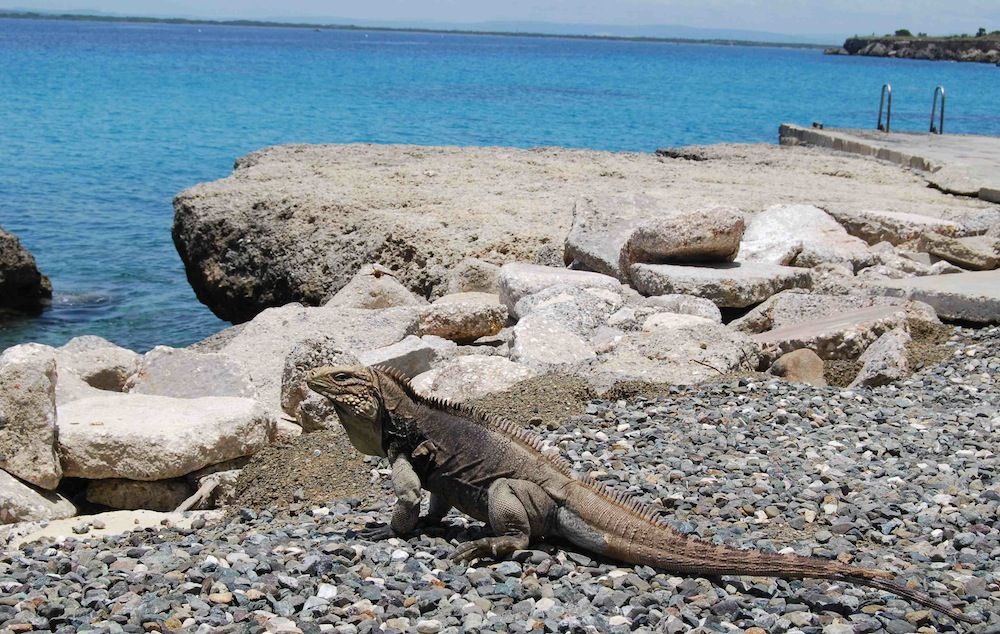Setting foot at U.S. Naval Station Guantánamo Bay, Cuba, the base resembles a small town in the American West of decades past. Surrounded by parched hills covered with scrub and cactus, downtown GTMO has the weathered texture of a place that was once new and bustling with people.
Now the often-empty streets house an outdoor movie theatre, a Subway in a mini-mall next to the Navy Exchange and a souvenir shop, a swimming pool, the Navy Lodge, a post office and a McDonald's. The detention centers where 176 suspected terrorists are still held are perched on the cliffs on the southeast side of the base, out of sight. During the day the sun is punishing, the air dry. Iguanas roam the streets, hiding in spots of shade when it gets too hot even for them.
Few GTMO residents—a mixture of military, civilian, and Jamaican and Filipino foreign workers—stay within these built confines of the base. Most are nature or adventure lovers and spend as much time outdoors or in the water as possible. Some have even spent years here, seeking out positions that allow them to return again and again to scuba dive, snorkel, fish, swim, or hike in these 45 square miles of Cuba—foreign and yet not.
Since Cuba agreed to lease the land to the United States as a coaling station 107 years ago, the U.S. Navy has held power over one of the most important bays on the island. The waters in and around Guantánamo Bay are critical, biologists say, to the marine life of Cuba and even parts of the United States, as fish that spawn here travel international currents without regard to borders and politics.
In a day on the water, one can see families of manatees, sea turtles, barracuda, reef sharks and uncountable types of tropical fish. On land, large swaths of base territory are closed to human access—both for military training and ecological conservation—so that threatened species of iguanas, boas, and hutia (a native Caribbean rodent which base residents call 'banana rat') have space to thrive.
Over the years, through a combination of geopolitical isolation, natural positioning, construction limits and conservation policies, GTMO has become something of a de facto nature refuge. Because the base staff alone does not have the expertise, manpower or funding to fully study the base flora and fauna, they invite civilian scientists to survey the wildlife. For a week this summer, I followed visiting scientists in their work for a view into GTMO's past, and possibly its future.
